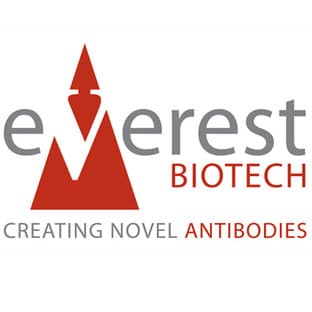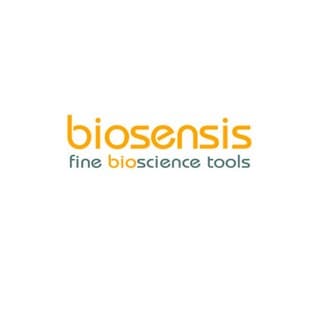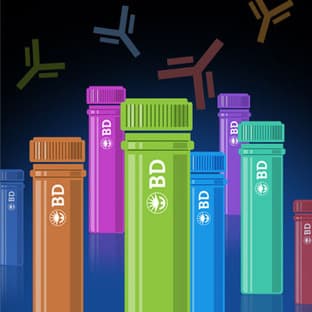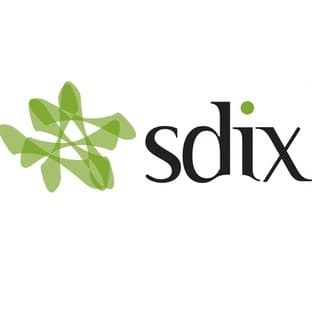
Supplier:
Boster ImmunoleaderCat no: PA1078
Polyclonal Anti-TIMP4
Prices direct from Boster Immunoleader
Quick response times
Exclusive Absave savings/discounts
SPECIFICATIONS
Price
200.00 USD
Catalog Number
PA1078
Size
100ug/vial
Applications
IHC, WB
Reactivities
Hum, Mouse, Rat
Form
Liquid
Format
Each vial contains 50% glycerol, 0.9mg NaCl, 0.2mg Na2HPO4.
Gene Id
TIMP4
References
1. Olson, T. M; Hirohata, S.; Ye, J.; Leco, K.; Seldin, M. F.; Apte, S. S. : Cloning of the human tissue inhibitor of metalloproteinase-4 gene (TIMP4) and localization of the TIMP4 and Timp4 gene to human chromosome 3p25 and mouse chromosome 6, respectively. Genomics 51: 148-151, 1998. \n2. Bigg, H. F.; Shi, Y. E.; Liu, Y. E.; Steffensen, B.; Overall, C. M. : Specific, high affinity binding of tissue inhibitor of metalloproteinases-4 (TIMP-4) to the COOH-terminal hemopexin-like domain of human gelatinase A. J. Biol. Chem. 272: 15496-15500, 1997.
Swiss Prot
Q99727
Storage Temp
\"At -20 degree C for one year. After reconstitution, at 4 degree C for one month. It can also be aliquotted and stored frozen at -20 degree C for a longer time.\nAvoid repeated freezing and thawing. \n\"\n
Additional Info
A synthetic peptide corresponding to a sequence at the C-terminal of human TIMP-4, different from the related rat sequence by two amino acids, and from the related mouse sequence by three amino acids.
Scientific Background
The tissue inhibitors of metalloproteinases (TIMPs) inhibit matrix metalloproteinases (MMPs), a group of peptidases involved in degradation of the extracellular matrix. TIMP4 gene contains 5 exons that span 6 kb of genomic DNA.The gene is expressed as a 1.4-kb transcript abundant in heart and present at low levels in several other tissues. expressed TIMP4 inhibits MMPs in vitro. TIMP4 gene is mapped to chromosome 3p25. TIMP-4 binds both progelatinase A and the C domain in a similar manner to that of TIMP-2.
More from Boster Immunoleader
Applications
WB
Reactivities
Hum
Applications
ELISA, WB
Reactivities
Hum
Applications
ELISA, IHC, WB
Reactivities
Hum
Applications
ELISA, WB
Reactivities
Mouse
Applications
ELISA, IHC, WB
Reactivities
Rat
Applications
BNI, ELISA, IHC, IP, WB
Reactivities
Mouse
Conjugates
Unconj, Agarose, AP, Biotin, Gold, HRP, BE, GE, YE, OE, RE, FRE, NIR, ONFC
Applications
BNI, ELISA, IHC, IP, WB
Reactivities
Rat
Latest promotions
Buy any polyclonal or monoclonal antibody from our extensive range of pre-made antibodies and for a limited time only receive a $50 discount!(T&C apply:...
New brilliant antibodies, and new lower prices!For flow cytometry reagents in general, \"bright is better.\" The violet-excitable BD Horizon™ BV421 and...
10% Discount on 2 Rabbit Polyclonal Antibody Service. With over 20 years experience, SDIX has developed into the premier US custom antibody producer,...
For the past decade scientists have extensively used ATS secondary toxin conjugates to make their own targeted toxins for in vitro use.The ability to combine...
We're so sure that you'll prefer Cayman Assay kits over your present brand that we're willing to give you a free assay kit to prove it!
Did your supplier increase the price of Fetal Bovine Serum? Did they substitute the US Origin with USDA? Well say no more! Innovative Research is still...
Bulk Cytokines with Custom Vialing.20 - 50% off cytokines, growth factors, chemokines and more...For a limited time Cell Sciences is offering substantial...
Are you planning to have a customised antibody made for your research?Since 2000, Everest has been producing a catalog containing thousands of affinity...
Top suppliers
Agrisera AB
11 products
Biotrend
Biosensis
969 products
ABBIOTEC
3011 products
SDIX
1 products
Spring Bioscience
2291 products
Cell Signaling Technology
4976 products
Rockland Immunochemicals, Inc.
7592 products
Boster Immunoleader
1533 products
OriGene Technologies Inc.
5281 products
Maine Biotechnology Services
227 products
BD (Becton, Dickinson and Company)
1 products
ABNOVA CORPORATION
Randox Life Sciences
1502 products















